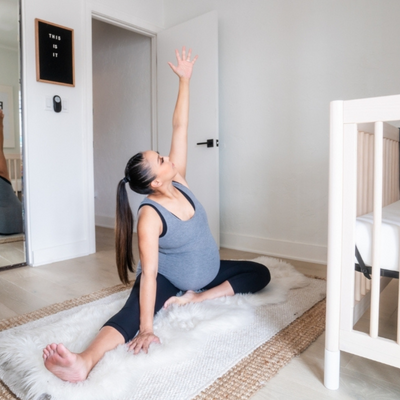By the 3rd Trimester, final adaptations are taking place to prepare your body for delivery, and your exercise possibilities will be further affected. The 3rd Trimester is often a time to alter the fitness program due to weight gain, the growing belly, increased spinal misalignment issues, and the burden of the extra load you are carrying.
Although total blood volume continues to expand, the increased heart rate will plateau by the 3rd Trimester, and stroke volume and cardiac output should begin to decrease. The enlarging uterus continues to push on the diaphragm, so the air volume in the lungs after each exhalation falls considerably. This causes a decrease in oxygen reserve and uptake and may make catching your breath seem more difficult. Higher-intensity exercise can become more challenging, and losing your breath with less intense movements is easier.
Remember, your pelvic floor is similar to a hammock. At this point, the weight of the uterus is causing the hammock to stretch downward, weakening this group of muscles and causing strain. Remember, the pelvic floor is not the only muscle that connects to the pelvis, and muscles such as the glutes and lower back will also feel the strain. This stress can make impact uncomfortable for women, and some women will opt out of all impact options during this trimester. However, remember each pregnancy is different, and we empower moms through choice.
Many moms-to-be lose the desire to continue exercising through the 3rd Trimester. But we encourage you to stay consistent. While you may be tired and low on energy, exercise can increase your energy levels. Remember the correlation between fitness and ease of labor and delivery (in normal, uncomplicated deliveries).
Just as we advocated throughout the 1st Trimester and the 2nd Trimester, we want to encourage you to continue moving throughout the 3rd Trimester. Let's dive into our Start, Stop, and Continue for fitness in the 3rd Trimester.

